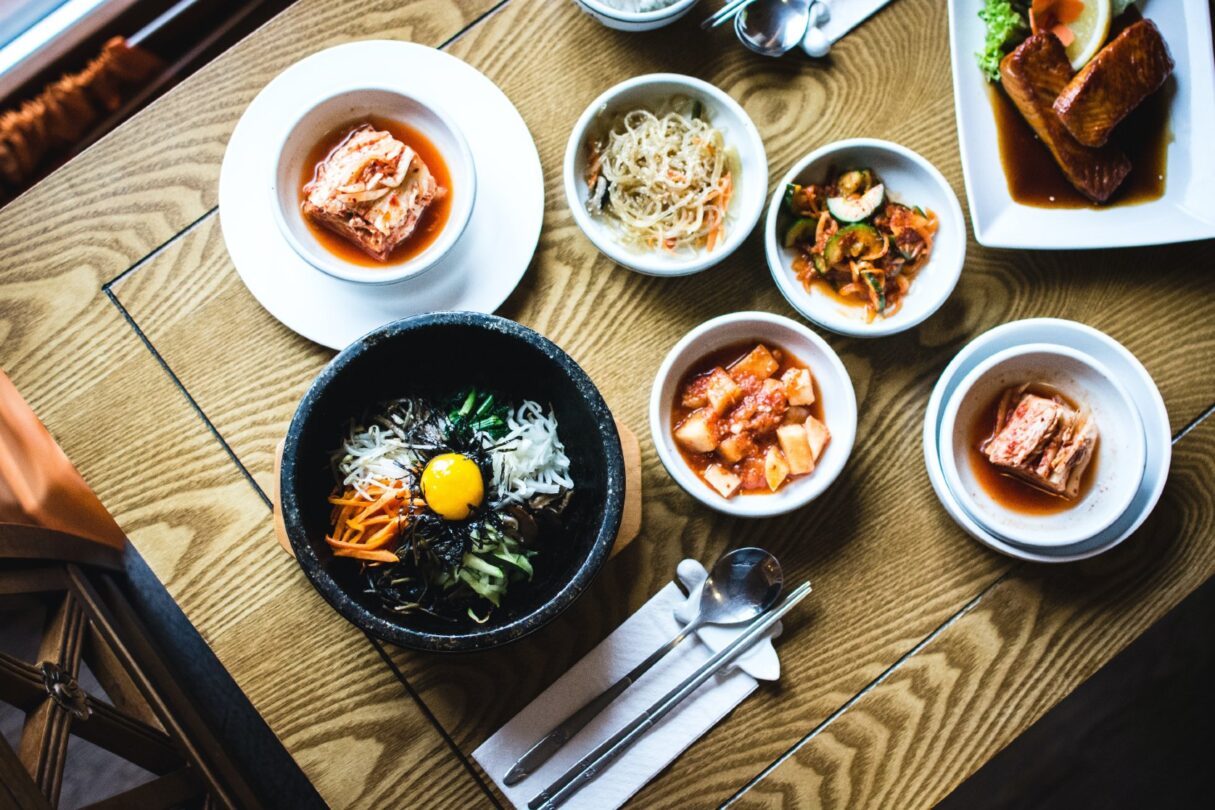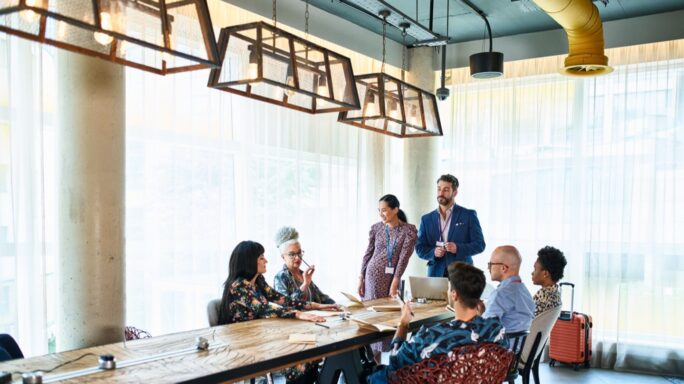Money Matters
Your ultimate guide to restaurant accounting
Explore our guide to accounting for restaurants. Get tips on how to format your restaurant accounting system and procedures.

Coronavirus disruptions have posed a huge challenge for the restaurant sector.
But it’s been resilient and is bouncing back.
For example, bookings in the first full week of opening, ending 24 May 2021, were 32% above those for the same period of 2019, according to booking website OpenTable stats produced for the Office for National Statistics.
To many, the pandemic and recovery have underlined how critical it is to have sound financial management backing up your restaurant business plan.
Restaurants adapted throughout the pandemic by tapping into ecommerce to open new revenue streams, such as deliveries and home cooking kits, as well as organising outside spaces or mobile units.
Established delivery services such as Deliveroo and Just Eat thrived.
But whatever model you move forward with, restaurants will still be high-turnover businesses that require specialised financial management.
This means an experienced restaurant accountant and modern accounting software will make a significant contribution to the success of your business.
To help get you started, we’re going to look into everything you need to know about restaurant accounting, with ideas and advice from experienced owners and accounting specialists.
Here’s what we cover:
Why do I need a restaurant accountant?
Why use accounting software for a small restaurant?
How do you keep good accounting records for a small restaurant?
What are restaurants’ key costs and how do you account for them?
Coal Rooms steams ahead with specialist accounting
Back up your restaurant plan with strong financials
Why do I need a restaurant accountant?
Many young restaurants start with a simple bookkeeping function, which is essential, but will not get you far as a business.
Bookkeeping is a backward-looking way of recording the money that goes in and out of your business.
Accounting is the next stage, as it analyses financial data and helps you keep on top of key performance indicators (KPIs) such as stock turnover, wastage, cash flow, salaries, staff turnover and gross profit margins.
Restaurant accounting needs to be extremely accurate.
With such large sales volumes, if your KPIs such as labour rates and gross margins fall only 2% or 3%, that will cut a big chunk off your income.
For example, a typical restaurant turns over £1m a year and has a gross profit margin of 70%.
In that situation, if your gross profit fell by only 2%, it would cut £20,000 off your profit. So you would have £20,000 less to reinvest in the business or take as income.
A good restaurant accountant will help you keep your figures within 1% above or below the same gross margin every month.
A typical margin to aim for in a restaurant is 70%.
David Burr, director at Carroll Accountants, says: “Gross margins and labour rates are so important you need to monitor them regularly.
“Do them weekly and monthly. Quarterly would be too late.
“Also, restaurant customers have so many ways to pay that if you don’t have good accounting, your finances can get out of control and you won’t know who owes you what.
“For example, one restaurant I know had not set up their credit card service direct debit and within 10 days they were missing £13,000 of sales.
“It’s important to have digital tills that integrate with your accounting software, so there is less manual handling of figures like that and you can track the figures more easily.”
An accountant can also advise you on the complex rules around payroll, VAT, and tips.
Burr says: “You need to know how tips are accounted for and how they should be taxed, as they are a big target at HMRC inspections.
“VAT is also complex in the restaurant trade, especially in the difference between hot and cold food and takeaway versus eat in.
“Restaurants with over £85,000 turnover have to register for VAT and returns have to be submitted online through HMRC broken down by day.”
VAT arguments around food are common.
An example was the notorious ‘pasty tax’. This followed a government proposal to simplify VAT on hot takeaway food so 20% would apply in all cases. The change would have increased the sale price of hot snacks such as sausage rolls and Cornish pasties sold on premises as they had previously been zero rated.
The change sparked so much controversy, the government had to amend it significantly.
Following the change, food such as sausage rolls or pasties sold on shelves – that is cooling down rather than kept hot in a special cabinet – were not liable for VAT.
Restaurant owners should beware such complications as getting VAT wrong can incur significant penalties from HMRC – up to 100% of the amount owed.
The key things to look out for when choosing an accountant are experience in the industry and a practical, proactive approach.
Good accountants are like a partner in the business building relationships and helping you grow.
So one of the biggest complaints from restaurants about accountants is they don’t hear from them often enough.
Alexandre Santamaria, founder of Oro Sushi, and food and drink developer Aware Hospitality, says accountants that understand food and drink well can drag your attention to points you would not see yourself.
“They will be involved with several other restaurants, so have access to best practice and broader market information,” he says. “But you need to quantify your accounting need as you may only need them a few hours a month.
“Technology does much of the heavy lifting nowadays.”
Why use accounting software for a small restaurant?
All well-run restaurants have accounting software as it helps them run more effectively and efficiently.
It saves time on manual accounting processes, but goes much further by providing budgeting, business performance and cash flow planning tools.
Cloud-based software allows you to collaborate with your accountants and check any financial information and analysis anywhere, any time. This allows you to track business metrics and react quickly to challenges and opportunities.
Santamaria says integration with other systems such as your electronic point of sale (EPOS) is the key to getting the best from your software.
“For example, invest in integrated stock control software that allows you to keep all purchase orders in one place, and measure stock levels and margins on each food and beverage item,” he says.
“Most software also includes HR modules allowing you to forecast and control staff costs accurately, which is great.”
Santamaria recommends three criteria for choosing software.
“First, who will use it?
“In a small restaurant, the operator will have to get involved and use the software. It is very unlikely they are a trained accountant, so they need user-friendly software.
“Second, do you already have systems that need to integrate with the new accounting software?
“Finally, is your concept likely to grow quickly or venture into multiple sales channels such as retail, export, or online?”
If so, you need a system that can handle these issues.
How do you keep good accounting records for a small restaurant?
Recording sales, payments and other details is a fundamental part of your operation and a legal obligation for limited company owners.
By integrating with digital tills, your accounting software makes it much easier to keep sales records and meet your Making Tax Digital requirements.
However, some software is still not MTD-ready, so, avoid it because it won’t be digitally linked to your main accounting system.
Burr says: “The first thing I recommend to newcomers is a good EPOS till system that integrates with your accounting software. Without that, you have to keep records manually.”
A modern EPOS system can also link to your kitchen automation, online reservation systems, credit card payment systems or click and collect for takeaways.
Seamless links to your kitchen system can help increase speed and accuracy of orders.
An efficient EPOS can also help you keep tabs on staff interactions with cash to reduce the chance of theft and reward upselling.
It can make reports available to management in real time, supporting faster, better decisions with some fantastic data and analytics, for example on inventory, staff performance and customer trends.
Staff can also interact with the system via their own touchscreen devices.
What are restaurants’ key costs and how do you account for them?
The main expenses for UK restaurants are staffing, rent, rates, and cost of goods sold (CoGS).
The hospitality industry tends to have particularly high staff cost – much higher than for cafes. It’s essential to keep staff costs as a percentage of revenue – usually around 30% to 35% – under control.
This can be a significant challenge in a business dominated by shift work, temporary and younger workers, and tipping – and in which inventory loss is surprisingly common.
Santamaria says: “Staff costs are variable and so important most restaurant owners challenge their teams on it regularly.
“Managing staff costs efficiently is about understanding your sales patterns and seasonality, which allows you to have the right staffing levels, at the right time.
“It is also about extreme reactivity and proactivity. If your bookings drop, a few tables cancel, or the weather changes, you must review your head count for that same day.”
A smart rota management or cloud HR system can help you flex shifts and stay efficient and make sure your staff are paid well and correctly.
Rent is generally a fixed cost negotiated upfront and is usually around 10% to 15% of revenue.
Kitchens spend a lot on utilities such as gas and you cannot skimp on that. However, you should try to avoid waste wherever possible.
To control CoGS, Santamaria recommends a technique called menu engineering, which analyses your sales and costs per item daily, and shows which items are popular and profitable.
“These figures must dictate what comes on or off the menu,” he says. “Do not make these decisions based on personal taste or instinct because, no matter how experienced you are, you could be wrong.”
Burr says most successful restaurants involve their chefs in the running of the business, which helps a lot in avoiding food and energy wastage, and menu management to hit the right margins.
Coal Rooms steams ahead with specialist accounting
Before hiring Burr at Carroll Accountants in 2019, Coal Rooms in Peckham, London, had no management accounts, budgets, targets or KPIs, nor benchmarking for wages.
Since then, Burr has helped the restaurant’s owners address all these issues, improve gross profit and help staff pay less tax on their tips.
He’s also helped them stay afloat during coronavirus lockdowns and set targets for recovery and paying off loans this year.
Richard Robinson, co-founder of Coal Rooms, says: “When we started, we hired a [generalist] accountant but it didn’t feel like a partnership, so we looked for a specialist.
“An accountant who understands the trade can spot potential problems long before they happen.
“For people like me, without vast experience, that is invaluable. David also went above and beyond during lockdown, getting on top of furlough and finding us other support.”
Robinson says the most important thing he has learnt is an understanding of KPIs, especially the impact of gross profit at various levels of the business.
For example, Coal Rooms’ gross profit on food was far from what it should have been. Burr helped them isolate the cause.
“That knowledge arms me to communicate with the team on what we need to do and where we’re going,” says Robinson.
“David also sends us management accounts monthly in an easily digestible format, and has created 12 and 36-month forecasts in a sensible, easily communicable format.
He also introduced us to an external stock taker, which is useful as it removes any bias.”
Coal Rooms has used accounting software since the restaurant launched in 2015, but it gets much more value from the technology now.
“The key benefit is quick and easy access to business performance figures, such as last month’s turnover or last year’s profit and loss statement,” says Robinson.
“Having all our information digitalised and well connected to other software is a massive bonus.
“I wouldn’t use an app that didn’t integrate with our software now.”
Back up your restaurant plan with strong financials
Opening a restaurant is an exciting time. But you must plan for success by backing it up with sound financial management.
Speak to fellow restaurant owners to see how they handle their finances.
Research good EPOS and other restaurant systems.
Most importantly, make sure you understand the financial rules and rhythms that apply to your restaurant. Factor these into your business plan, and start shopping around for a good accountant and accounting system.
Small business toolkit
Get your free guide, business plan template and cash flow forecast template to help you manage your business and achieve your goals.








Ask the author a question or share your advice